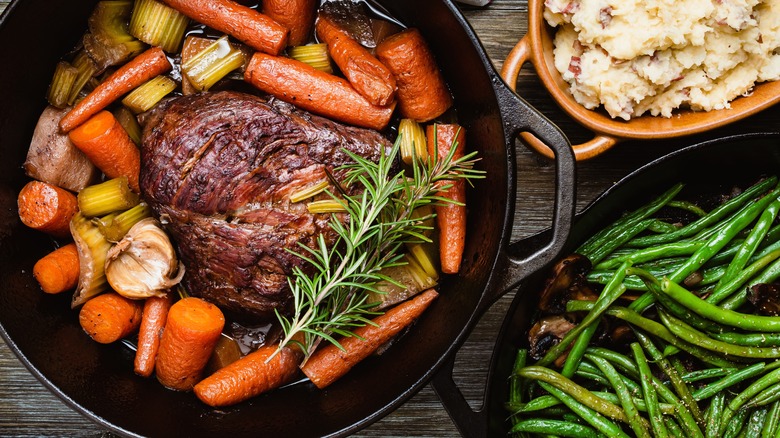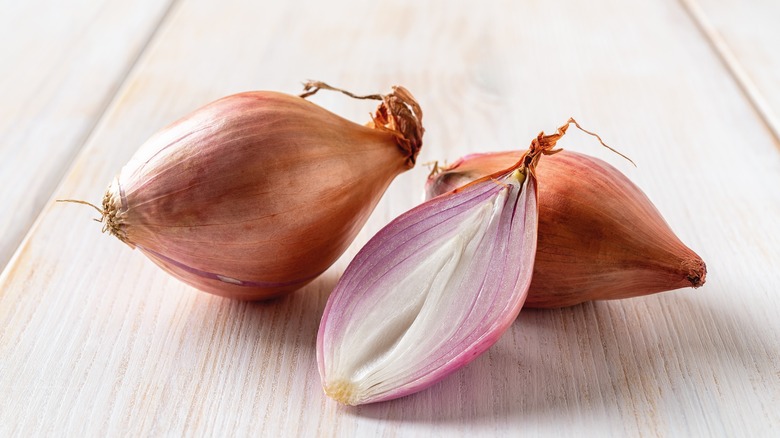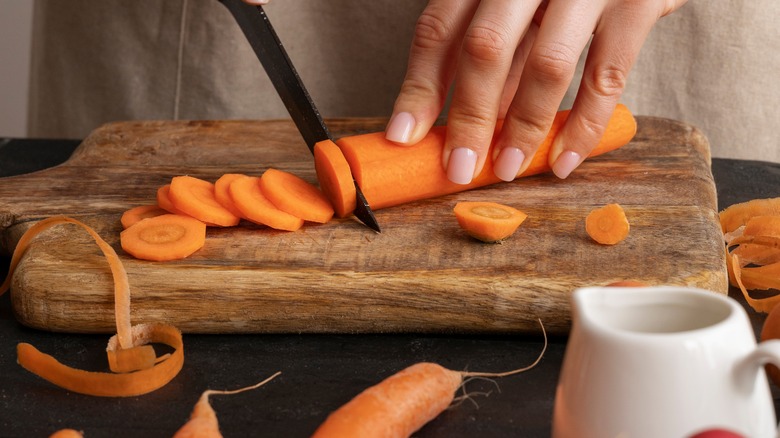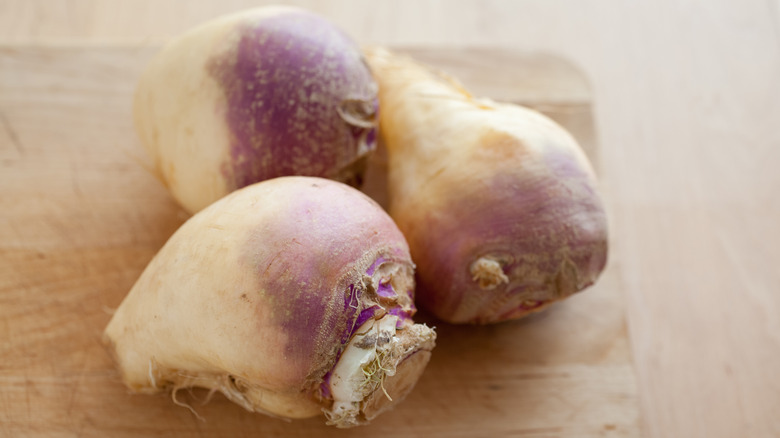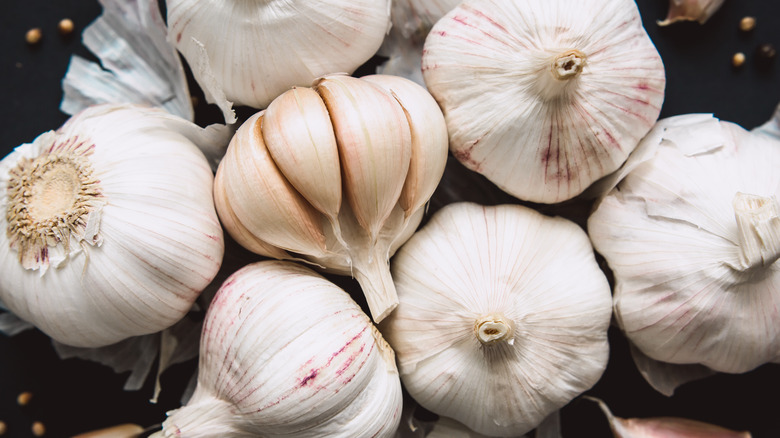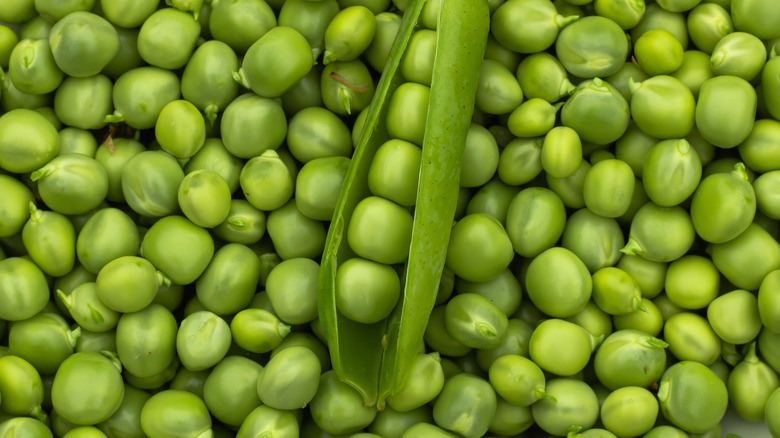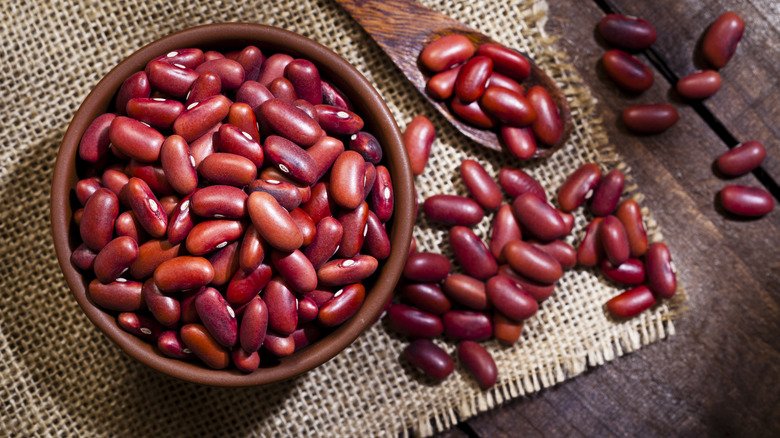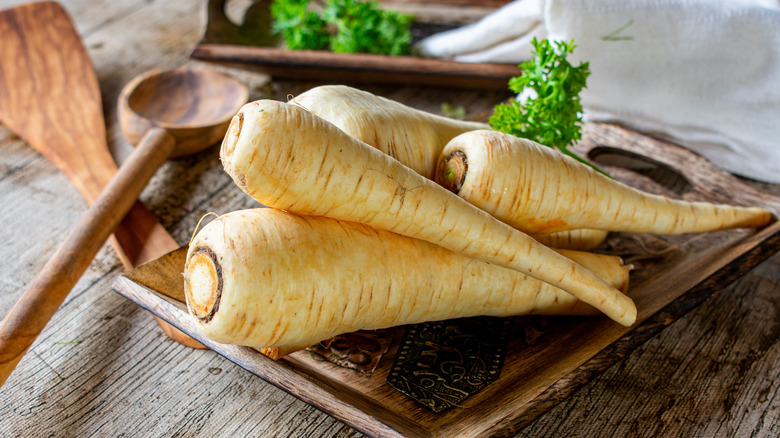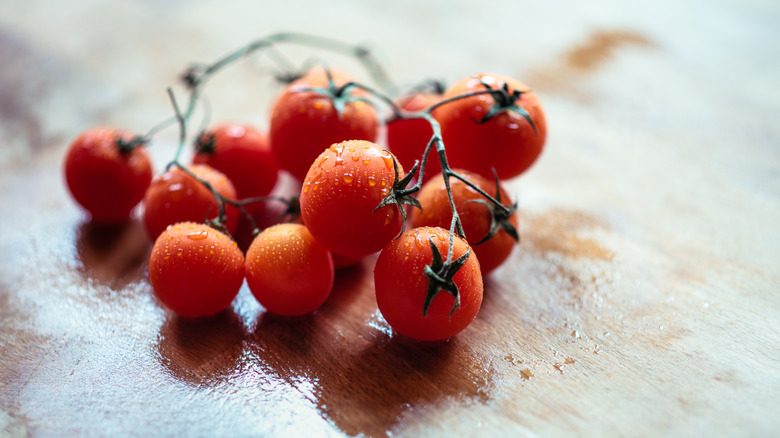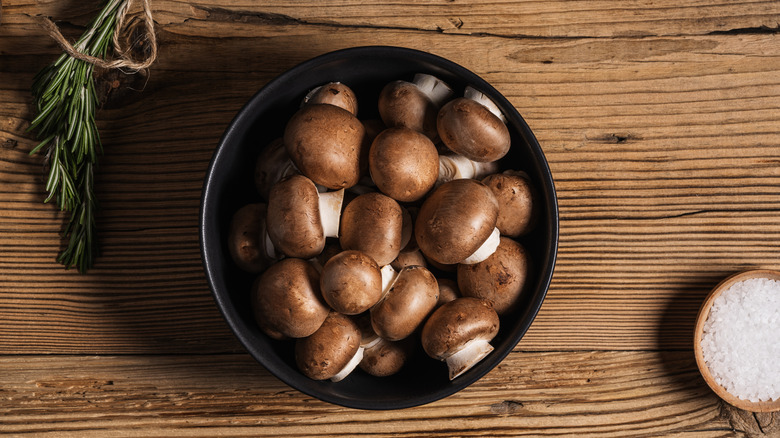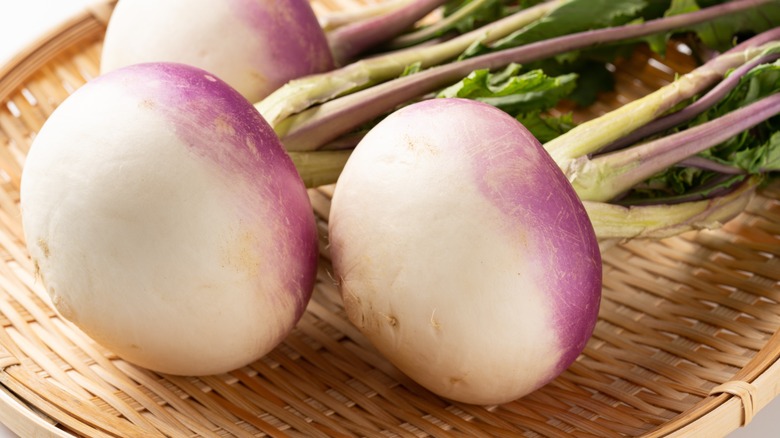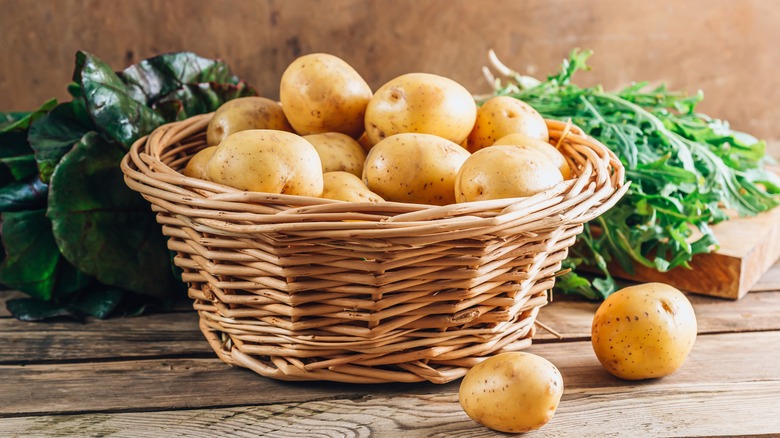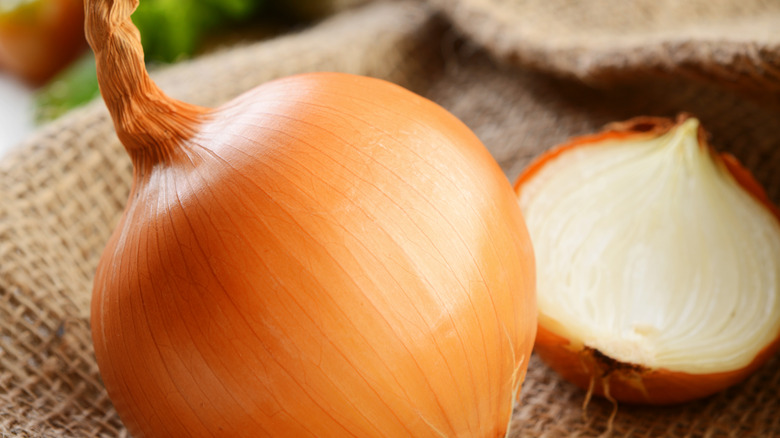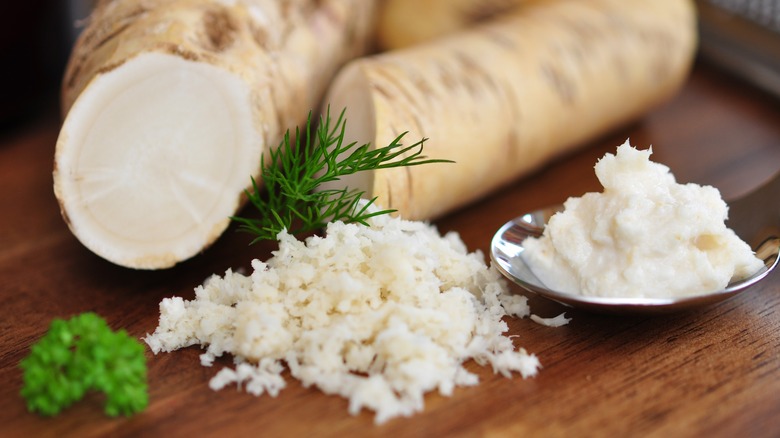13 Vegetables You Should Be Cooking With Pot Roast
Pot roast is one of those recipes that should be easy. Just throw everything in a slow cooker, set it, and forget, right? Wrong. A truly good pot roast should be thoroughly planned out, and cooked in stages. Some of the biggest mistakes everyone makes with pot roast are failing to brown the meat, deglaze the pan, and cook it slowly enough to ensure the meat becomes as tender as possible. And although it's all about getting that roast cooked to perfection, most of the ingredients are vegetables and should be selected carefully and purposefully. This is not one of those everything-but-the-kitchen-sink dinners, so we've selected the best vegetables you should be cooking with pot roast to help you get started.
Not each mouthful of pot roast will contain meat. But if cooked properly, the essence of the meat should be a significant part of the gravy that will infuse each vegetable in the roast. These vegetables need to be cooked to perfection so they are tender, yet hold their shape. Too often, vegetables in pot roast are overcooked and turn mushy. There are, however, vegetables that tend to hold up better when slow-cooked and retain their texture and form. The flavor of each vegetable you choose will seep into all aspects of the roast, which is what makes this entrée so unique and delightful. This means it's absolutely essential to choose wisely when it comes to ingredients, especially vegetables.
Shallots
Aromatics are absolutely essential when it comes to selecting vegetables to cook with pot roast. They help to add foundational flavor and can fill your kitchen with that intoxicating scent of home cooking. Shallots in particular add quite a bit to the equation. They are incredibly sweet, slightly bitey like garlic, and have that layered soft texture when cooked, similar to onions. One tip when cooking with shallots is that if they are going to be slow-roasted or simmered for hours on end, they can be cooked whole, but if they are going to be consumed raw or lightly cooked, they should be minced or finely diced. Be sure to select the right variety of shallot. For a pot roast, we recommend pink shallots, also known as Jersey shallots because they are sweet and mild, and fairly accessible in most grocery stores. Give the shallot a good squeeze and select a firm one, as you would with onions.
Peel away the papery outer layers, and cut off the base. Separate the bulbs of the shallot, and drop them into the pot roast early during the cooking process. You can even brown them along with the cut of meat, but the overall goal is to have them slowly caramelize in the sauce and release their sweet sugars and pungent flavors into the gravy. Don't worry about the shallots overcooking, because the longer they cook the sweeter they get.
Carrots
A pot roast isn't complete without a few basic vegetables, and carrots make the cut absolutely essential to the overall dish. In fact, you'll find very few pot roast recipes that don't feature the bright orange root vegetable. This is because carrots, although typically used in a savory capacity, are incredibly sweet and flavorful. Because they are root vegetables, they are fairly hearty and hold their figure during a slow roast. It's unlikely that even after being cooked for hours on end that they will be mushy or fall apart. In addition, they are slightly woody and earthy, which pairs phenomenology with a robust and gamey cut of meat.
The key to getting more flavor out of carrots is to buy them smaller, as the rule goes with most vegetables. Select baby carrots, or small full-sized carrots and chop them into large, bite-sized rings. Each ring should be at least ½ an inch thick, as smaller slices will likely overcook quickly. Pot roast is known for its chunky vegetables. Carrots are also notorious for absorbing the sauces around them. If you're looking to infuse a vegetable with the flavors of the pot roast gravy, herbs, and spices, then carrots are the way to go.
Rutabaga
Another root vegetable that is slightly less common in pot roast, but makes for an incredible anterior ingredient to complement the roast itself is rutabaga. If you're not entirely sure what a rutabaga is, you're not alone. It's certainly less common than beets, turnips, or carrots, but should certainly be considered when it comes to pot roast. Rutagabags are a hybrid of two vegetables: turnips, and cabbage. It is a cross between being a root and cruciferous vegetable which gives it a unique flavor of its own.
While rutabagas do resemble turnips because of their shape and purple coloring towards the top, they are often it bit more brown and have yellow rather than white toward the bottom. They are sweeter, and have a more distinctive sharp flavor, similar to a cruciferous vegetable, or cabbage which can be described as spicy. In addition, rutabagas are much larger than turnips, so when selecting them for a pot roast recipe, you may only need to buy one. Dice them into bite-sized pieces, and add them after carrots, as they take slightly less time to cook. Like carrots, they will absorb the juices from the roast, and their bright coloring will darken significantly as they slow cook.
Garlic
The famous and most loved aromatic on the planet is essential to pot roast. Recipes that just call for a few cloves are really expecting you to take creative liberty and add as much as you'd like. If it calls for two cloves, why not add six? Like other aromatics, garlic adds an important element to pot roast. It's powerful in flavor and will be essential to infusing both meat and other vegetables with flavor. Garlic itself is quite pungent, spicy, and intense, but becomes more mild and sweetens up as it's cooked.
Feel free to add a whole head of garlic to your pot roast. Choose a variation of garlic that is sweet, like rocambole which can be identified by the purple streaks in papery exterior. Use the butt of your hand to firmly whack the base of the garlic where the roots are to loosen the cloves. Then use the flat side of a large knife, and your palm to crush each clove for easy peeling. Cut off any course or fibrous ends, and drop the crushed, whole cloves of garlic right into the gravy to cook. Allow it to slow cook for the entire length that the roast does so that it can sweeten up as much as possible, infuse the gravy with its incredible flavors, and fill your kitchen with that irresistible pot roast scent.
Peas
Although it's nice to have big, chunky, bite-sized vegetables to fill up your fork when eating pot roast, it's also important to have a variety of shapes, textures, and sizes. Luckily, delicious things come in small packages, and peas are no exception. These sweet little pearls of flavor are often not allowed to show their full potential. Frozen bags of peas are over-boiled, and turn out starchy, mushy, and bland. However, if the proper tips for cooking with peas are followed, they are grassy, sugary, and savory.
While some vegetables can be added right off the bat, others will become overcooked if added too early. So how are you supposed to know when to add veggies to pot roast? It all has to do with the size and texture of the vegetable. Since peas are teeny tiny, and can be consumed raw, it's best to add them later in the game. Especially if you plan on using frozen peas, which are pre-cooked, wait until the last 15 minutes or so. For fresh peas, which we highly recommend using, you can add them slightly earlier. They will still absorb some of the flavors, but you won't risk ruining their texture. There is nothing worse than mushy peas.
Kidney beans
Anytime you add beans to any sort of stew, soup, or sauce, it's important to use dried or fresh beans, rather than canned ones. This way, as they cook they can absorb all of the broth, sauces, and gravies and become a vehicle for flavor. When selecting the perfect bean for your pot roast, consider kidney beans. They are tougher, larger, and slightly meatier than black or cannellini beans, and have a red coloring that blends in beautifully with pot roast. However, there are tens of thousands of bean varieties, so unless you know everything there is to know about beans, it's best to stick to a variety you're used to. If you're new to the world of beans, kidney beans are the way to go.
Kidney beans are classically used in a vegetarian pot roast but can be a major asset alongside a meaty roast itself. Beans are typically soft, starchy, absorbent, and dense which makes them great candidates to contrast some of the lighter vegetables in a pot roast. Consider adding dried beans right off the bat, but remember to increase the liquid ratio as they will absorb quite a bit as they cook.
Parsnips
Although parsnips look quite a bit like white carrots, they have a unique flavor. While carrots are loaded with sugar, parsnips are subtly sweet. Their overwhelming flavor can be described as more licorice-like and they have a distinct peppery spice to them. They are earthier, and nuttier, which is why they typically don't make it onto a hummus or ranch platter in place of sweet carrots. You would certainly notice the difference if you were eating them raw, but as they are cooked they do tend to sweeten up, like most vegetables. Parsnips are stiffer than carrots, too, with a woody texture, and are loaded with fiber, which makes a nice nutritional pairing with red meats that can be tougher to digest as it contains no fiber.
If you'd like to tone down the sweetness of a classic pot roast, replace some of the carrots with sliced parsnips. This works well in certain recipes, like a harissa pot roast recipe, or one that focuses on spice rather than sweetness. There's no need to peel parsnips, but like any root vegetable, you'll want to give it a good scrub with a stiff brush before slicing it into thick rings and adding it to your stew.
Grape or cherry tomatoes
Often, tomato paste is an ingredient that's recommended in gravy for pot roast. This is because tomatoes have an intense sweetness and umami undertones that add variety and a meaty depth of flavor. And although most recipes wouldn't call for a sliced or diced tomato to be added to the pot, consider including grape or cherry tomatoes. They will likely cook down and fall apart to some degree, but those delicate skins will be left holding an incredibly sweet and juicy interior that can be quite pleasing in pot roast. In addition, the juices that seep out of the tomatoes will infuse other ingredients, and help to spread that umami flavor we all love.
When choosing between cherry and grape tomatoes, know your differences. Cherry tomatoes are rounder, like cherries, while grape tomatoes are oblong. Grape tomatoes more closely resemble the texture of plumb tomatoes, because they are meatier and less water dense, while cherry tomatoes are sweeter and juicier with a thinner skin. Both work beautifully in pot roast, but grape tomatoes may stay together better during the cooking process, so lean this way if that's your target outcome. Don't cut them, but instead include them whole as soon as you've added the broth. This will give them a chance to reduce, shrivel, and work their magic.
Portobello mushrooms
Although pot roast is already known for being meaty, who says you can't take it even one step further? Portobello mushrooms are famous for replacing meat, or enhancing it because of their chewy texture and umami undertones. In fact, you can make a vegetarian meaty portobello pot roast recipe, sans meat, that has a similar overall flavor to classic pot roast. But, for those meat eaters out there who enjoy a mushroom and Swiss burger, or chili and whisky-rubbed mushrooms on their ribeye steak, you know that doubling up on the meatiness of a dish using mushrooms never hurt anyone.
Include baby 'bella mushrooms that have been sliced in half or quartered. These large chunks will absorb all the juices, herbs, and spices of the pot roast and create a chewy and juicy vehicle for flavor. You can also use dried shiitake mushrooms that have been ground into a powder and included in the broth for the ultimate umami flavoring, which will be sure to give your pot roast a distinctive rich depth.
Turnips
Turnips are rutabagas bitey father. They are less sweet, more purple-toned, whiter, and smaller. If your pot roast is loaded to the brim with sweet vegetables like onions, carrots, and tomatoes, then you should consider including turnips instead of rutabaga in your stew to add more variety. Turnips are famous for their use in gastropub French fries, being featured in fall and winter stews, and being enjoyed steamed with butter as a side dish. They are a little less overwhelming to someone new to the produce department than rutabagas, which are a handful and a half, so they are a good place to start if you'd like to include this type of root vegetable in your classic Yankee pot roast.
Consider choosing between turnips and rutabaga, instead of including them both. Turnips are mildly sweet and nutty, and have a similar earthiness that most root veggies share. No need to peel them, but be sure to use a sharp knife to prevent injury when cutting into this fibrous, round, and stiff vegetable. Dice it into bite-sized chunks, and add it when the pot roast has reached its mid-point in the cooking process. You'll want to avoid it becoming soft and mushy, but it should be cooked all the way through and relatively tender by the time you're ready to eat.
Potatoes
Pot roast isn't really pot roast without potatoes. They either need to be cooked in the gravy itself or alternatively, pot roast can be served over a bed of creamy and buttery mashed potatoes. However, including potatoes in the cooking process is a surefire way to ensure that those spuds will soak up every last drop of flavor, and deliver it beautifully alongside the meat and other vegetables.
An easy way to add potatoes to pot roast is to select small fingerling or baby potatoes, and simply leave them whole or cut them in half or quarters depending on their size. You should be able to fit more than one vegetable on your fork, along with some meat, so think bite-sized. Because the potatoes will cook quite a bit, they will be easy to slice with a knife or fork, so if you'd prefer to leave them whole for aesthetic appeal, that's an option as well. The type of potatoes you'll want to use will vary depending on personal preference, but we recommend Yukon gold or red potatoes. Yukon golds are slightly creamier and sweeter, which can be quite delicious, but both options have the ability to knock your pot roast out of the park.
Onions
No pot roast is complete without onions. In fact, this aromatic is the foundation for endless meat dishes, soups, stews, and sauces. They can be incredibly sweet, but also pungent, spicy, tangy, and sharp depending on their preparation method. When it comes to pot roast, the longer the onions cook the better. Even if they nearly come close to dissolving, this will just add to the overall flavor of the gravy, so don't worry about over-cooking them.
The best variety is yellow onions to cook in pot roast. This is because they caramelize beautifully because of their high sugar content, and intensity of flavor. Start by peeling your onion and cutting off the root end. Slice your onion into large chunks, think quarters, or go slightly smaller. These wedges of onion will separate from each other as they cook, and provide a juicy, sweet, absorbent, and flavorful mouthfeel to accompany the meat and other vegetables. Even if you've included shallots and garlic, don't skimp on the onion. It provides essential flavor for the gravy and a nice soft texture in the overall composition.
Horseradish
Horseradish is one of those ingredients that people either keep safely stocked in their refrigerator to put on just about everything, or they refuse to go near the stuff. It's very intense and is typically used as a condiment, mixed into a sauce to spread on a sandwich, or drizzled over meat. It's very spicy, like mustard, and can even be sinus-clearing or eye-watering if consumed fresh or in quantity. Horseradish is a root but is typically sold ground up in a jar. It's off-white and reminiscent of ground ginger or turmeric in texture. Because of its intensity, it's important to add just a little bit at a time to create a balanced flavor and avoid having the root vegetable take over entirely.
However, a subtle amount of horseradish can add more flavor to pot roast without becoming overpowering, or without even being noticeably detectable. It's like adding a hint of cayenne to roasted potatoes, vinegar to a soup, or a splash of maple syrup to a marinade. It helps to create a balanced mouthfeel without being a key ingredient. Consider the root over spicy pepper, because horseradish is so potent for such a short amount of time on your tongue, that it will wake up those taste buds without taking over. That kick of heat will be gone in a flash, leaving space to enjoy all of those other flavors you've worked so hard to put together.
